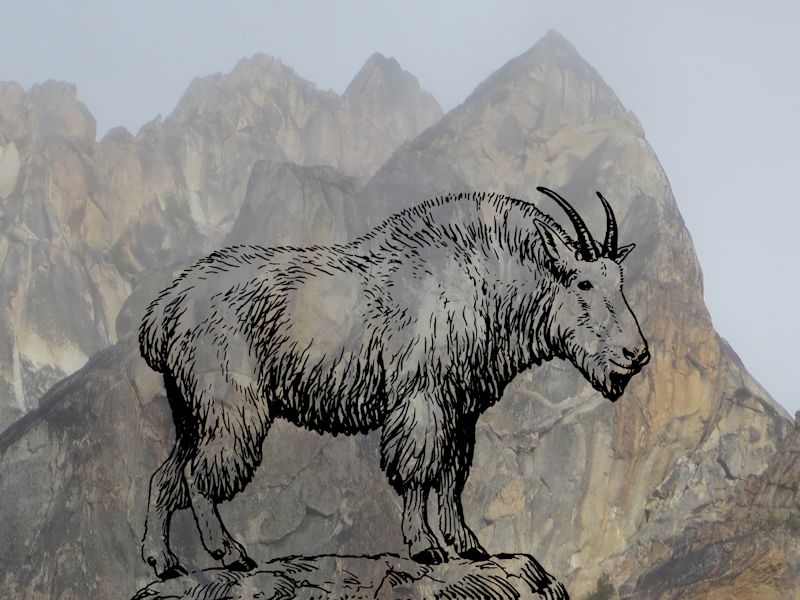Management Plan for the Mountain Goat (Oreamnos americanus) in British Columbia
|
MountainGoatManagementPlan_Final_28May2010.pdf Mountain Goat Management Team. 2010. Management Plan for the Mountain Goat (Oreamnos americanus) in British Columbia. Prepared for the B.C. Ministry of Environment, Victoria, BC. 87 pp. |
Monitoring the Effectiveness of Mountain Goat Habitat Management
|
MonitoringMountainGoatHabitatManagement.pdfMonitoring the Effectiveness of Mountain Goat Habitat Management, Steven F. Wilson, March 2005 (257 KB) Steven F. Wilson, Ph.D., R.P.Bio., Ecologic Research, March 2005. Prepared for BC Ministry of Water, Land and Air Protection. 17 pp. |
Selected quotes
Page 4
Wildlife Habitat Features are intended to protect point or linear resources such as mineral licks and traditional trails. Policy related to Wildlife Habitat Features has not been fully developed [as of March 2005].
Important habitat for mountain goats exists in protected areas. These areas are not considered in this report because they are not protected under FRPA [Forest and Range Practices Act]; however, ... distribution and abundance of habitat managed for mountain goats should include an inventory of mountain goat habitat in protected areas.
Page 5
aircraft (particularly helicopters) have the potential to displace mountain goats from preferred habitats; in particular, winter ranges, escape terrain and natal areas ... Fixed-wing and ground-based disturbances are less disruptive. Because mountain goats travel long distances along traditional trails to access low-elevation mineral licks, industrial activity near trails and licks has the potential to disturb and displace goats from critical habitat features.
Page 10
Evidence of sustained use by mountain goats [is established by observation of] pellet groups or direct observations of animals using trails and mineral licks.
2020 Commentary
Of human-induced stressors, what is not mentioned as a major stressor is recreational hiking and skiing trails. By far the greatest impact comes from helicopters, industrial activity such as logging, road building, blasting, hunting, fixed wing aircraft, habitat destruction, motorized use such as snowmobiles.


